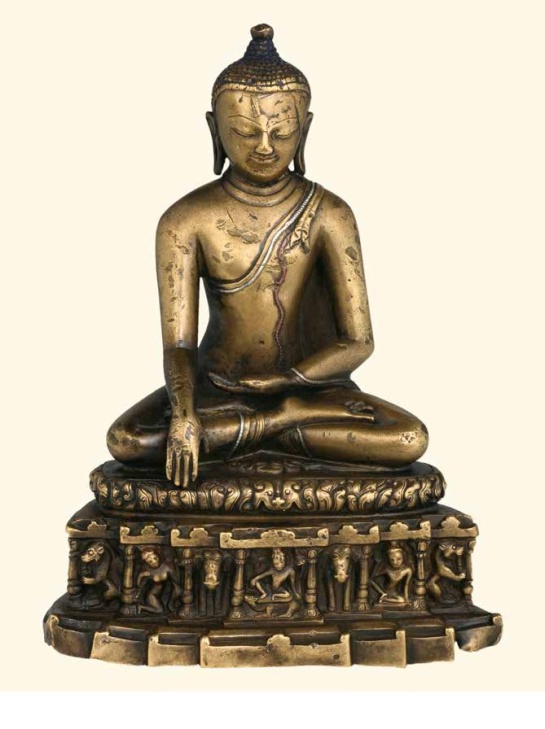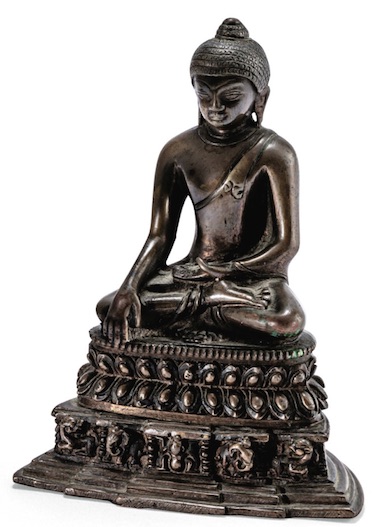There is a small group of brass and copper sculptures of the historical buddha thought to be copies of an ancient statue that was at the Mahabodhi temple in Bodh Gaya (see The Buddha’s True Face ). The buddha sits on an embroidered cushion with Kirtimukha on the front, atop a throne supported by two snow lions looking over their shoulder, two elephants facing the viewer, the goddess of Earth, whom Shakyamuni called to witness at the time of his enlightenment, and a male figure, possibly a donor or the demon Mara (see article by Jane Casey).

11th century, Tibet, Shakyamuni, copper alloy with copper overlay and silver inlay, photo on Asia Society
11th-12th century, Tibet, Shakyamuni, brass and copper, Nyingjei Lam collection, photo on HAR.
His right hand makes the gesture of calling Earth to witness his right to attaining enlightenment, the left hand is in the meditation gesture.

12th century, Tibet, Shakyamuni, bronze with paint, at the State Hermitage museum in St Petersburg (Russia).
The above has cold gold on his face and blue pigment in his hair, denoting worship in Tibet.
A black and white photo of a similar work.

11th-12th century, India, Shakyamuni, copper alloy with copper and silver inlay, at the National Museum of India in New Delhi.
A variant with a silver hem and a turquoise decoration in his chignon, seated on a throne with one more character at the front, seated at ease on an animal.

11th-12th century, North-Eastern India, Shakyamuni at Bodhgaya, brass with silver and copper inlay, photo by Björn Arvidsson for the Fondation Alain Bordier, ABS 232 at the Tibet Museum in Gruyères (Switzerland).

16th century, Nepal, Shakyamuni, gilt bronze (with cold gold, pigments, and turquoise inlay), item 62-2357 at the National Museum in New Delhi (India).
The trident to the right of the central character suggests that we are looking at simhanada Lokeshvara.

18th century, Tibet, Shakyamuni, copper alloy, private collection, Arts d’Asie lot 23, 18th June 2020, Sotheby’s (Paris).



